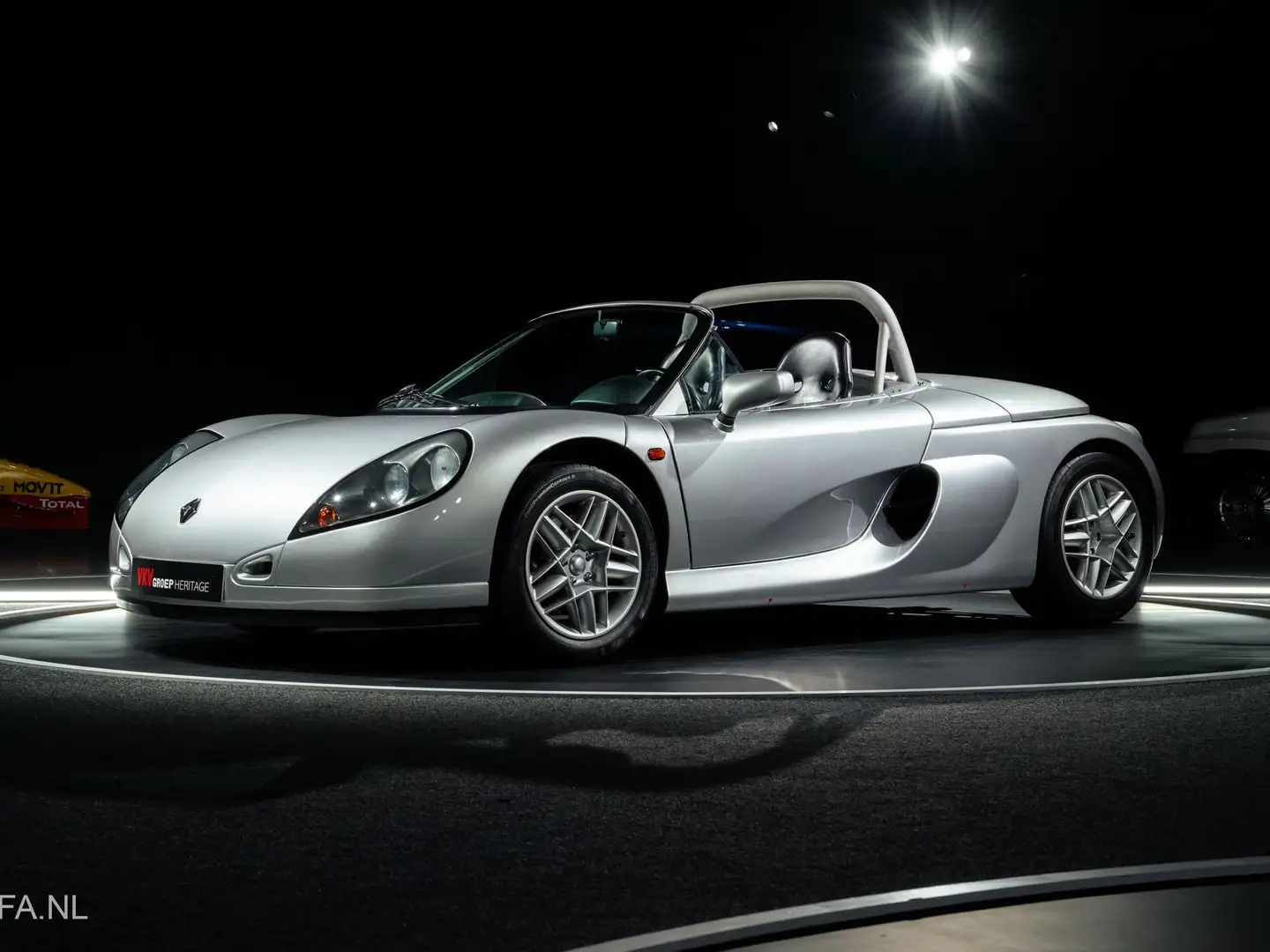Mileage
40,000 km
Gearbox
Manual
First registration
08/1999
Fuel type
Gasoline
Power
110 kW (150 hp)
Seller
Dealer
Financing
Calculate your car loan
How much do you want to borrow?
Basic Data
- Body type
- Convertible
- Type
- Used
- Drivetrain
- Rear
- Seats
- 2
- Doors
- 2
- Country version
- Netherlands
Vehicle History
- Mileage
- 40,000 km
- First registration
- 08/1999
Technical Data
- Power
- 110 kW (150 hp)
- Gearbox
- Manual
- Engine size
- 1,998 cc
- Gears
- 5
- Cylinders
- 4
- Empty weight
- 930 kg
Energy Consumption
- Fuel type
- Gasoline
Colour and Upholstery
- Colour
- Silver
- Upholstery colour
- Black
Vehicle Description
Eigenlijk is het ontwerp en de constructie van de ophanging die van een raceauto. Vanaf het begin was de Spider bedoeld als basis voor een nieuwe raceserie met één model. Renault organiseerde deze kampioenschappen sinds het begin van de jaren 80 met de 5 Turbo-, 21 Turbo- en Clio-modellen.
Meer informatie op: www.kucarfa.nl
Actually, the design and construction of the suspension is that of a racing car. From the outset the Spider was intended to be the basis for a new one-car racing series. Renault had been running these championships since the early 80s with the 5 Turbo, 21 Turbo, and Clio models.
The first prototypes for Project W94, as it was known at the time, were completed in mid-1994 and a concept version was presented to the public at the Geneva Motor Show a year later. The car went on sale in early 1996, assembled at the Alpine factory in Dieppe. Left hand drive versions were first produced with an aeroscreen device the same as the race cars. In 1997, a version with a full glass windscreen and wiper was made available.
the pedals of the Spider were adjustable as well as the seat so the driver could achieve a better driving position. Power for the Spider came from a version of the 2-litre F7R engine from the Clio Williams and Mégane Coupe, producing 150 PS (110 kW; 148 hp). The weight of the windscreen model was 965kg and the small wind deflector model was 930kg.
Approximately 1640 cars were produced through 1999, with the addition of around 80 race only versions.
More information on: www.kucarfa.nl
Meer informatie op: www.kucarfa.nl
Actually, the design and construction of the suspension is that of a racing car. From the outset the Spider was intended to be the basis for a new one-car racing series. Renault had been running these championships since the early 80s with the 5 Turbo, 21 Turbo, and Clio models.
The first prototypes for Project W94, as it was known at the time, were completed in mid-1994 and a concept version was presented to the public at the Geneva Motor Show a year later. The car went on sale in early 1996, assembled at the Alpine factory in Dieppe. Left hand drive versions were first produced with an aeroscreen device the same as the race cars. In 1997, a version with a full glass windscreen and wiper was made available.
the pedals of the Spider were adjustable as well as the seat so the driver could achieve a better driving position. Power for the Spider came from a version of the 2-litre F7R engine from the Clio Williams and Mégane Coupe, producing 150 PS (110 kW; 148 hp). The weight of the windscreen model was 965kg and the small wind deflector model was 930kg.
Approximately 1640 cars were produced through 1999, with the addition of around 80 race only versions.
More information on: www.kucarfa.nl
Insurance
Car insurance from ANWB
Calculate your premium
License plate
Seller
DealerKucarfa B.V.
Provider on AutoScout24 since 2024ContactJohn Kuiper
- VAT deductible
- Dealer price

